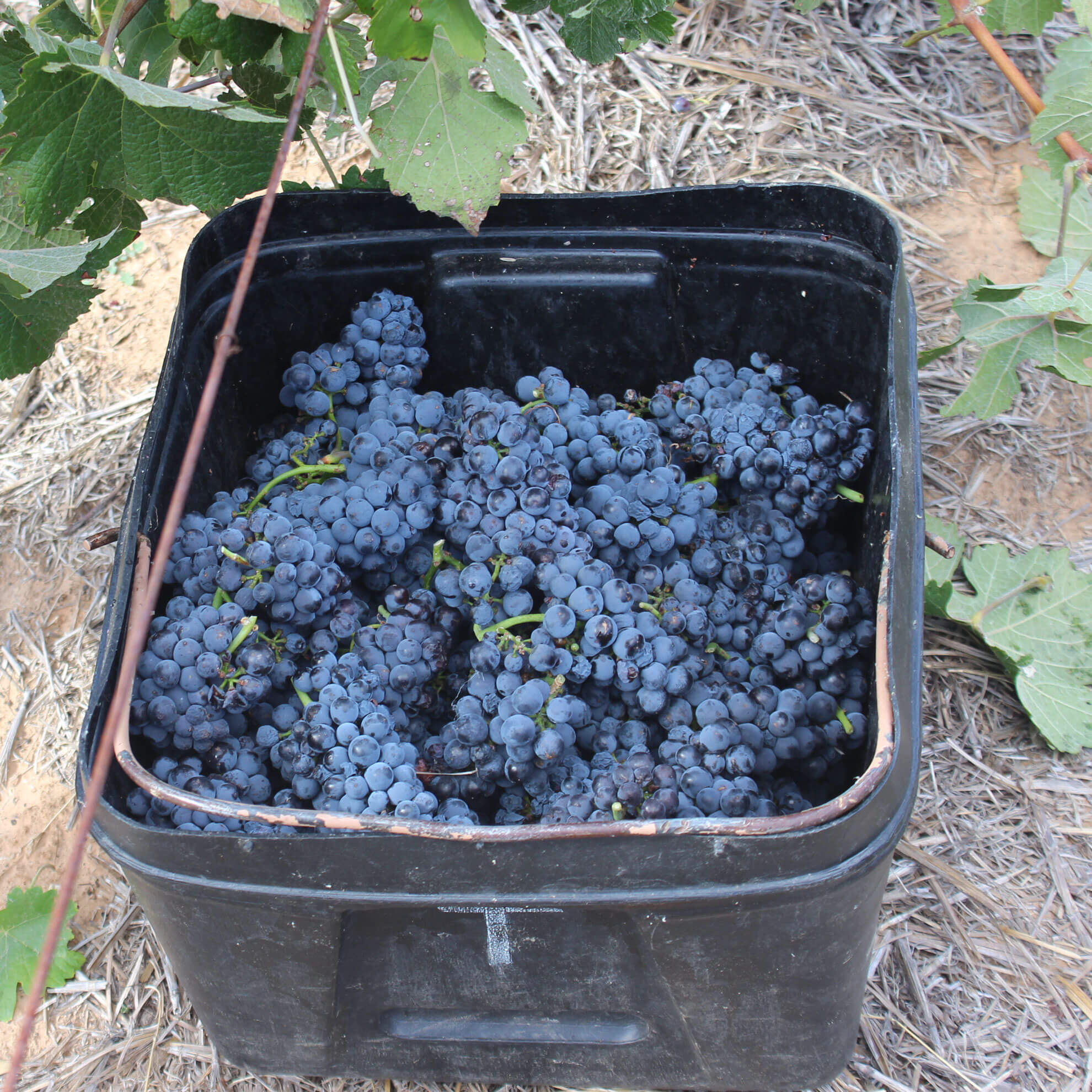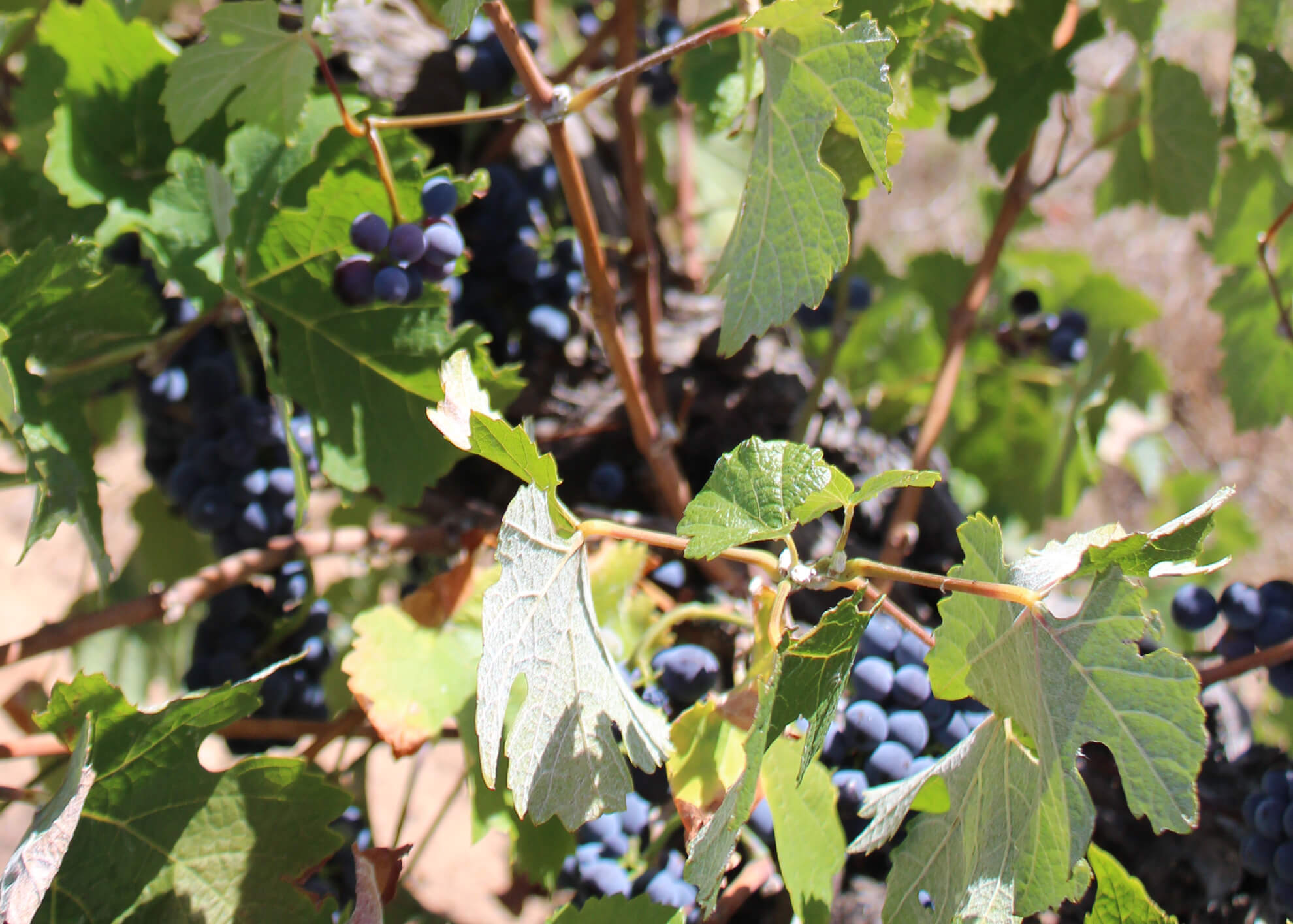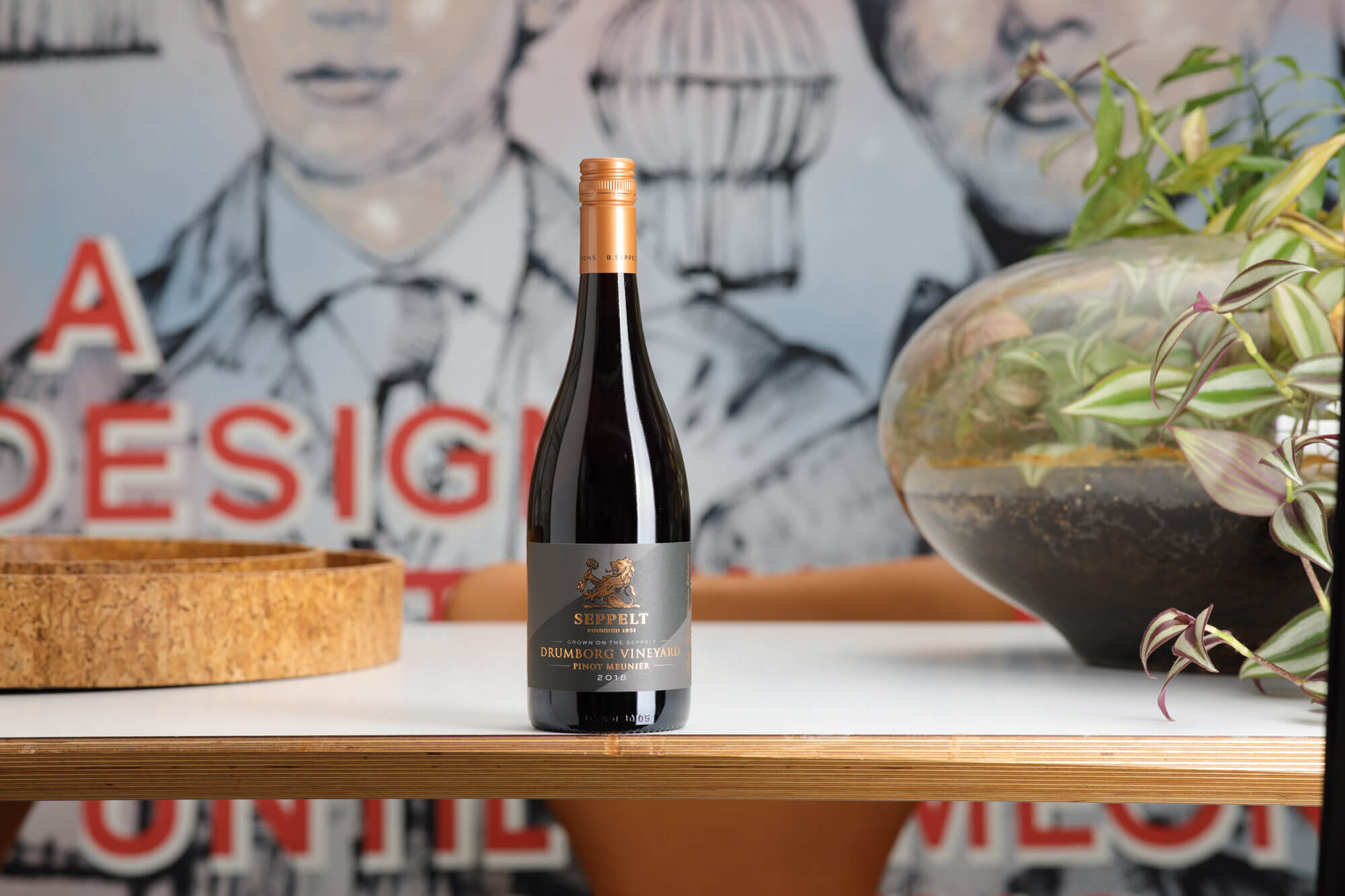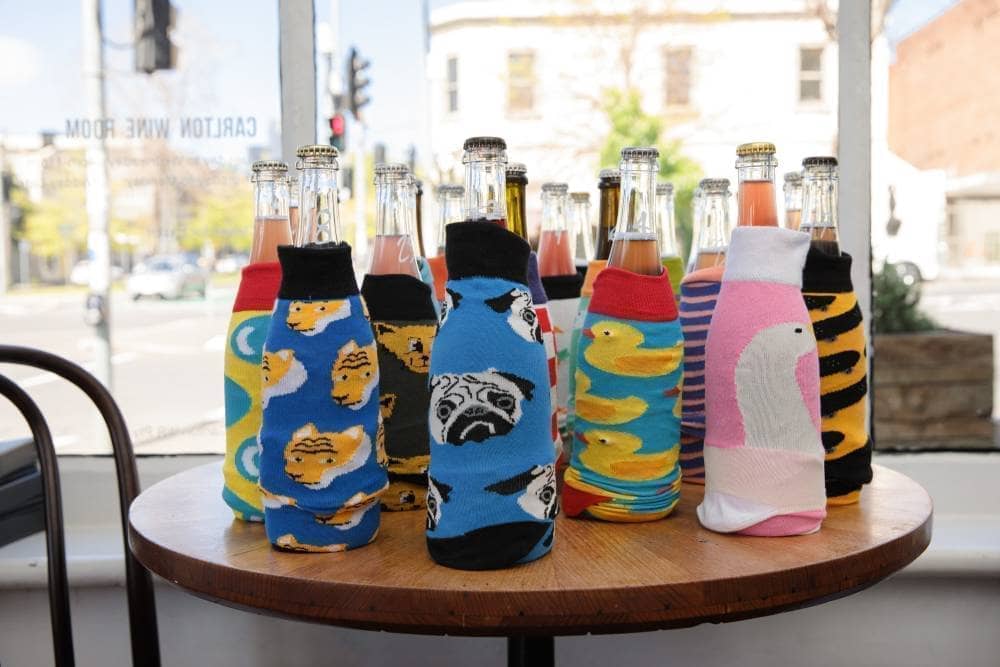Pinot meunier. For all the dazzling success of Champagne, its most planted grape is accorded little of the acclaim. Almost none. While they ride on the broad shoulders of meunier, the garlands go to the glamour couple of chardonnay and pinot noir.
Pinot meunier has long been the workhorse, a variety that is a reliable producer in the more difficult years, and on the cooler north-facing slopes, ripening more reliably and earlier, while retaining nervy acidity at good sugar levels. It was not traditionally seen to have the regal cast of pinot noir, nor the grace of chardonnay, but it was essential for bringing wine to bottle.
Historically, this reliability saw it become one of France’s most planted varieties, with it occupying significant vineyard space in the north. And while that contribution has been diminished over time, it still is one of the country’s more heavily planted varieties – the success of Champagne sees to that.
Pinot meunier came to Australia as part of the Busby collection in 1831. And while Busby may be responsible for much of the vine material in the country, some also point to Swiss immigrants who pioneered viticulture in the Geelong region, crediting them with also bringing meunier on the voyage across the seas. Best’s sourced cuttings from one of these vineyards in the 1850s, planting their still extant vines in 1868.
And while most famous Champagne houses employ meunier, with icons such as Krug championing it, its input remains anonymous to all but the most trained palates. Pinot meunier has, however, been bottled as a standalone cuvee more and more frequently, with some producers focusing on it entirely. These are mainly grower producers (Récoltant-Manipulant – makers that only work with estate-grown fruit), rather than the major houses, who assemble from far and wide to achieve consistent blends.
For a small grower who only has pinot meunier vines or dominant plantings and wants to make wine only from their own vines… well, that means it will be meunier or meunier dominant. But though this program may have begun as a function of necessity, the results have been somewhat spectacular. Producers like Jérôme Prévost, notably with his ‘La Closerie’ from his Les Béguines vineyard, have shown what a compelling grape it can be.
But outside of Champagne, and of sparkling wine in general, meunier has taken the lead in few places, and then typically to make quite simple wines. It crops up in Germany, and to a limited degree in Switzerland, but the new-world plantings are predominantly made for sparkling production, emulating the Champagne blend. And while that may be true of Australia too, its origins in this country predate sparkling wine production. In fact, Australia has one of the few real lineages of meunier as a grape for still wine, and that history is a long one, and almost entirely attributed to Great Western stalwart Best’s.
![]()
Pinot meunier vines at Best’s
Pinot meunier came to Australia as part of the Busby collection in 1831. And while Busby may be responsible for much of the vine material in the country, some also point to Swiss immigrants who pioneered viticulture in the Geelong region, crediting them with also bringing meunier on the voyage across the seas. Best’s sourced cuttings from one of these vineyards in the 1850s, planting their still extant vines in 1868.
The most famous of these, the Suisse Vineyard, now known as Neuchatel, was established in the 1840s and was one of the largest contributors to winegrowing in the Geelong region, until it was wiped out by phylloxera by the 1890s. Well, all but for a lone surviving chasselas vine (an indigenous Swiss variety), which still crosses the doors of the historic stables. More ornament than anything else, but still it is the lone vitis vinifera vine left from those early plantings. It is not known if Best’s cuttings came from the Suisse Vineyard specifically, but it is not unlikely. (In 2018, not far from Neuchatel, a new vineyard was established by Barwon Ridge winery to celebrate that history, and fittingly it has been planted to pinot meunier from cuttings sourced from Best’s oldest vines. A return to origins, it seems.)
It’s worth reflecting on that great repository of history that is at Best’s. Amongst those original 1868 plantings there are some 40 varieties in the ground, from the noble to some that are closer to table grapes. The oldest dolcetto vines in the world are at Best’s, as are the oldest pinot meunier vines. Unusual records to hold for an isolated vineyard in country Victoria, but there you have it.
![]()
![]()
Pinot meunier harvest at Best’s
Today, meunier is still largely earmarked for sparkling production. Wine Australia’s Annual Vintage Report registers just shy of 800 tonnes of pinot meunier crushed in 2019, with the bulk concentrated in Tasmania, the King Valley, the Adelaide Hills and the Yarra Valley. These regions all make a bit of sparkling wine, but the report excludes regions that crush under 1000 tonnes, so Henty, in Victoria’s south-west, is excluded, and it certainly is responsible for some fine examples of still meunier. We’re a long way from ploughing a deep furrow with pinot meunier in Australia, but there are now enough notable bottles – from makers ranging from the established to the avant-garde – around these days to warrant a deep dive into the grape in the Australian context.
The world’s most significant mono-varietal pinot meunier made as a still wine was in the tasting: Best’s ‘Old Vine’, which came off near to 150-year-old vines…
As always, the panel was made up of six of the country’s finest tasters, makers and thinkers, with a brief to find the wines that compelled the most. This was not an exercise in technical perfection or to champion one style over another, nor was it a search for profundity. Rather, the aim was to find wines of interest and character that reflected variety and place.
Our panel was made up of: Natasha Johns DipWSET, Brand Manager Shaw + Smith and Tolpuddle; Loic Avril, Wine Director at Dinner by Heston; Gilles Lapalus, winemaker and vermouth artisan, Maison Lapalus and Maidenii; Tessa Murray DipWSET, Sommelier at Cutler & Co.; Stephanie Jacob, Wine Buyer at Supernormal; and Sebastian Crowther MS, Director of Real Wines. All wines were tasted blind.
![]()
Sebastian Crowther, Tess Murray, Stephanie Jacob, Gilles Lapalus, Loic Avril and Natasha Johns. Photograph: James Morgan. Location: Bromley & Co.
Pinot meunier, the grape
Meunier is the French word for miller, which references the fine white hairs that are present on the underside of the leaves, resembling a dusting of flour. Historically it was known as Miller’s Burgundy in Australia. Pinot meunier is a mutation. The grape flesh resembles pinot gris and pinot noir genetically, but the skin belongs to meunier alone. This makes the grape a chimera, botanically. The reliability of meunier to ripen in cooler conditions is due to its propensity to bud later and also ripen earlier, which means it avoids some of the perils that extreme weather can bring. By avoiding issues at flowering, more berries are brought to maturity, and with earlier ripening, there’s less chance of issues at harvest. It tends to retain good acidity, too, while also achieving similar sugar (and therefore alcohol) levels as pinot noir. It typically has lower tannin levels, and doesn’t quite have the detail of pinot noir, with flavours typically in the red berry spectrum.
![]()
Pinot meunier vines at Best’s – note the distinctive fine white hairs under the leaves that resemble a dusting of flour
The overview
Unlike the tastings we have conducted so far, there is no great reference point here, no great old-world benchmark, no overwhelming body of work to influence the tasters. Indeed, probably the world’s most significant mono-varietal pinot meunier made as a still wine was in the tasting: Best’s ‘Old Vine’, which came off near to 150-year-old vines. However, that doesn’t necessarily mean it is the definitive expression, simply that it has significant seniority.
“It’s kind of a blank canvas here; you don’t know what to compare it to. I think the initial things you compare are pinot [noir] and gamay,” commented Crowther, “and I think that’s what people are doing with it in Australia, is trying to not overcomplicate the winemaking side of things… a lot of cab-mac, whole bunch, and the best wines were the ones like that. Anything that had a bit of oak interplayed into it, that charry character took away the purity of fruit. And I didn’t mind ones with a bit of whole bunch, a bit of stem, those nice spicy elements.” And while Lapalus also praised wines with whole bunch and carbonic notes, he felt that at times it was overplayed. “The first two wines I thought tasted like gamay, they were so carbonic,” he said.
That use of whole bunches during fermentation was a thread through many of the wines, with savoury, spicy and sometimes greener and more vegetal notes commented on. “Wines that stood out in this bracket were those that used some whole bunch ferment to introduce a little chew, without over-working tannin, or hitting it with oak. Heading towards more of a juicy throwback style makes sense for a grape like meunier. The floral prettiness of some of the wines in this bracket was particularly interesting and quite exciting,” commented Jacob.
That extraction of both skins and stalks was handled in quite different ways, resulting in quite a range of expressions, with Murray noting those from the “seriously light and fine to slightly more brooding, extracted styles.” Avril found that this divide also separated the more successful wines from the less so. “Some were certainly more extracted, which showed that pinot meunier with a certain extraction level doesn’t respond very well, but as soon as you get more ‘infusion’ the variety is more in balance, with acidity, tannins and aromatic flavours,” he noted.
Pinot noir was referenced more than once, with Avril going a step further and commending a couple of wines that reminded him “more of the old Burgundies made in the 70s and 80s… the more savoury, forest floor, floral, spice of the pinot meunier.” Lapalus also commented favourably on wines that sat in a pinot noir spectrum, though not exclusively so. “I didn’t mind the ones with the oak influence. They both tried to do something a bit more towards pinot noir, and to some extent it worked, with a good marriage with the wood,” he said.
Murray felt the tasting underlined more than one difference with pinot noir. “Tannins I felt were raspier than the plush silken tannin of pinot. There were more dried herbs and sappier notes to many of them with a raspberry, red plum fruit spectrum,” she reflected. “In comparison to Pinot Noir, it’s less about structure and more about juicy red fruits,” Jacob also noted.
Johns saw characters in some of the wines that she identified with the meunier component in Champagne, citing “red fruits, citrus notes, minerality and acidity” as hallmarks. But, she noted, “there were other wines in the mix that were far more evocative.” Her top wines showed more complexity, which she associated more with pinot noir than how she knew meunier, with silkier and more complex texture, and felt the oak in these wines was well handled and added rather than overrode the fruit. “I leant more towards wines that looked less what my thought of meunier is in that Champagne context,” she concluded.
As usual, there were some regional eucalypt notes found in some of the wines, but unlike at some other tastings this wasn’t always a distraction. Overall there was a general consensus that meunier did have a distinct voice, and even when it pushed into pinot noir territory, this was not so much imitative, but rather a positive reflection on the complexity that meunier can achieve. Overall, there was a brightness and purity to the wines, with very few sitting heavily on the palate. “What is pinot meunier in Australia? Drinkability,” declared Lapalus.
The Number One Picks
These are the number one picks from each of the panellists, with supplementary notes from other panellists if they featured in their top-six lists.
![]()
2018 Seppelt Drumborg Vineyard Henty Pinot Meunier $36
This carried the day rather convincingly, with both Lapalus and Crowther picking it as their top wine of the tasting. It also featured in the top-six lists of Johns, Avril and Jacob. “Very appealing on the nose, lots of attractive fruits, perfumed, with detail unfolding with every smell. Very silky and attractive on the palate. So much enjoyment here,” said Crowther. Lapalus noted the “sous-bois, spicy, smoky, complex” nose, while he found the palate “soft, supple, balanced, vinous,” with a “long finish and strong mineral notes.” Avril also noted the mineral character, calling it “ferrous.” “Vivacious! Juicy bright red fruits, currants and raspberries – practically leaps out of the glass – well defined, fruit pure, finely structured and super pretty. This wine has loads of fruit but has this electric acid backbone to support it,” said Johns, calling it “a super example and one that shows why meunier can age so well.”
![]() 2018 Murdoch Hill Adelaide Hills Pinot Meunier $30
2018 Murdoch Hill Adelaide Hills Pinot Meunier $30
One of two Murdoch Hill wines in the tasting, this, their more entry-level offering, also found favour with five of the panel, with Avril giving it his top marks. “What great savoury aromatic notes. Forest floor, compost. It’s a pleasure to smell. Palate is elegant, slightly meaty and savoury. Some whole cluster and gentle extraction. Great harmony. Great tannins,” he remarked. “Fresh cherry and warming spice with a touch of rhubarb, the texture is incredibly plush – fleshy and soft,” noted Jacob. Crowther commented on the “orange zest and spice,” and commended the “lovely tart sensation on the palate – good grip and acid.” Johns also referenced “orange peel and spice,” while adding that it had “a crushed rock minerality supported by finely structured but powdery tannins and racy acid.” She closed her note by calling it “Really fine, lithe and delicious.”
![]() 2018 Guthrie ‘The Zephyr’ Adelaide Hills Pinot Meunier $27
2018 Guthrie ‘The Zephyr’ Adelaide Hills Pinot Meunier $27
This also found plenty of cross support from four tasters, with Jacob marking it as her top wine. “A glass you keep going back to because it’s just drinkable. Super juicy with ripe yellow plum skin and a herbal stalky edge giving some chew and interest,” she commented. Lapalus remarked on the “fraise des bois” fruit character with “floral” notes, while he registered “fennel, anise” notes on the palate. Murray saw similar characters, with “dried rose, a fennel anise-like spiciness,” which she attributed in part to some whole bunch inclusion in the ferment, as did Lapalus. Avril saw “lavender and red flowers,” calling it a “perfumed wine,” with a “balanced palate” and “firm and ripe tannins.” Crowther found the “red fruit character” an “attractive element,” while Murray “loved the fullness of fruit and subtle complexity of the wine whilst it firmly sits as a light wine.”
![]() 2017 Best’s ‘Old Vine’ Great Western Pinot Meunier $100
2017 Best’s ‘Old Vine’ Great Western Pinot Meunier $100
From the oldest vines by far (planted in 1868) Johns called this as the wine of the day, and it also featured on the lists of both Avril and Lapalus. “So much going on here, Red currants, pomegranate, plum, wild strawberry, sour cherries, plum with dried rose petals and some lifted high-tone citrus adding interest. Outside of the fruits, there is some gravelly mineral characters showing through with a touch of brine that makes it super interesting, all with chewy tannins and bright acid framing. Oak is more noticeable with cola and vanilla notes but so much else going on that it’s a delicious coupling regardless. Dee-licious,” wrote Johns. Avril noted what he felt was a “higher fruit concentration,” while also commenting on the balance, noting that the wine was “made very well.” While he felt it was “a bit closed,” Lapalus also singled out the balance and the “fine tannins” on the “finale.”
![]() 2019 Fikkers Yarra Valley Pinot Meunier $32
2019 Fikkers Yarra Valley Pinot Meunier $32
This was Murray’s pick of the tasting. “On the nose earthy, autumnal leafiness, dried cherry and spice. A touch medicinal. Dry, bright acidity, finer tannin than other examples today. Near Silkiness, with gentle layers and good length. I like this for its brightness without it being green or in any way under-ripe. Not the most complex of the line-up, but I would happily smash a bottle of this, and feel it is a pretty and delicious example of meunier,” she commented. Jacob found it “pretty and alluring with purple floral aromatics, great impact on the palate, plenty of concentration and mouth-watering acidity.”
The Consensus Picks
These were all in the top six lists, receiving cross support from the tasters, though none were nominated as their wine of the day.
![]() 2019 Collector ‘Landfall’ Tumbarumba Pinot Meunier $34
2019 Collector ‘Landfall’ Tumbarumba Pinot Meunier $34
While not being registered as a top pick, this made the lists of five of the panellists. Avril found it “floral” with “blue fruit,” calling it a “well made” and “easy drinking wine.” Crowther also enjoyed its immediacy, calling it a “simple but very attractive and pleasant drink.” Lapalus called it a “food wine,” while Jacob found “a wild character that was intriguing, giving some savoury umami depth.” Murray commented on “the pure fruit and crunchy bright acidity with considerable length on the palate,” noting that she “was drawn to the tension between fruit, spice and near tartness. I felt the wine came together really well.”
![]() 2018 La Violetta ‘Meunier’ Great Southern $37
2018 La Violetta ‘Meunier’ Great Southern $37
Four panellists included this in their lists. Johns found “hints of bramble and blackcurrant along with riper red fruit,” calling it “quite exotically heady with lots of dried floral notes.” Jacob also commented on the ripeness. “A darker, riper style, more reminiscent of pinot noir. Lovely ripeness, dark fruit and spice and savoury spice of oak,” she wrote. Lapalus also drew a parallel with pinot noir aromatically, along with attendant “spice and sous-bois” notes. Murray noted “sweet red berried fruit,” with a “lifted resinous spiciness.” She found that it was “building in complexity” over time, but did have a question mark about whether the finish was “too drying.”
![]() 2019 Murdoch Hill ‘The Surrey’ Adelaide Hills Pinot Meunier $40
2019 Murdoch Hill ‘The Surrey’ Adelaide Hills Pinot Meunier $40
The second Murdoch Hill wine to find favour, with Murray, Crowther and Avril all listing it in their top-six lists. “Lots of red and black fruits on the nose backed by some big spice, lots of stem inclusion. Fruit is soft and attractive on the nose. Firm pinch of tannin on the palate, but a nice drink,” commented Crowther. Avril found that it was “dominated by wild red fruit,” along with “smoke and earthier flavours.” Murray saw “wild strawberry and spice, lifted whole bunch brightness,” and noted that it was “more savoury,” but still had a fine plushness on the palate.”
![]() 2019 Ochota Barrels ‘The Mark of Cain’ Adelaide Hills Pinot Meunier $40
2019 Ochota Barrels ‘The Mark of Cain’ Adelaide Hills Pinot Meunier $40
Crowther rated this highly. “Lifted bright red fruits with a sour edge, redcurrant and cranberry. Green herb and spice add lovely detail…. Sappy and raspy on the palate, beautiful layers and finesse. Sexy wine. Could drink a lot of this!” he wrote. Murray noted the “lightly candied raspberry/red cherry notes,” with “light spice (anise).” She found the “angular tannins quite compact,” and praised the “lovely, super-bright acidity and freshness.”
The Other Top Picks
These wines featured in one of the panellists’ top six, but they were not necessarily the lowest ranked on their individual lists. We’ll let their words do the talking.
![]() 2018 Hungerford Hill Tumbarumba Pinot Meunier $40
2018 Hungerford Hill Tumbarumba Pinot Meunier $40
Johns: “Sour red cherries and plums with orange peel and some tea leaf and dried herb. Really spritely acid, with fine tannin, some mineral salt and an overarching savoury tone. Quite a lot of interest in this wine, a little lean but with enough fruit to stop it from being mean in any way.”
![]() 2018 Main & Cherry Adelaide Hills Pinot Meunier $40
2018 Main & Cherry Adelaide Hills Pinot Meunier $40
Johns: “Red fizzy lollies, ripe pomegranate, cherry and raspberry fruits that are supported by a firmer tannin structure and sherbet-ty acid. This was a wine I would like to have more time with. Really delicious with lots of structural interest.”
The Panel
![]()
Loic Avril
Loic Avril hails from Tours, in the Loire Valley, but has spent much of his career working abroad. After apprenticing at the Michelin starred Le Grand Monarque and Anne de Bretagne, Avril worked with the legendary Gerard Basset, before moving to The Fat Duck in Bray, where he worked as the Assistant Head Sommelier until moving to Australia for the temporary relocation of The Fat Duck. He stayed on to become the Director of Wine for Dinner by Heston Blumenthal. He has won countless accolades, including Best Young Sommelier in the World, the UK and France.
Tessa Murray is currently a sommelier at Andrew McConnell’s Cutler & Co. She has worked vintages around the world, including at the legendary estate of Vincent Dauvissat, in Chablis, as well as with Tom Carson at Yabby Lake, on the Mornington Peninsula. She is also a WSET Diploma holder.
![]()
Seb Crowther and Tess Murray
Sebastian Crowther is one of only five Master Sommeliers in Australia, having passed the notoriously difficult test in 2013. He currently runs his wine import and wholesale business, Real Wines. He has previously won Sydney Morning Herald Sommelier of the Year and also the Judy Hirst award for the best wine list in the country. Prior to devoting himself to his own business, Crowther was the Beverage Director for the Rockpool Dining Group.
Stephanie Jacob is the Wine Buyer at Andrew McConnel’s Supernormal. She has worked a number of vintages across different regions, judged at Royal Melbourne, was awarded the 2016 Daniel Pontifex Scholarship, and was a Ruinart Sommeliers Challenge Finalists in 2018.
![]()
Stephanie Jacob and Gilles Lapalus
Gilles Lapalus is originally from Burgundy, and the third generation of his family to be involved with wine. He studied oenology in Dijon. Lapalus moved to Australia in 2001 to help establish the Sutton Grange Winery, near Castlemaine. In 2011, Lapalus started to experiment with native botanicals, which led to the founding of Maidenii with Shaun Byrne and Vernon Chalker. Theirs was the first vermouth to employ Australian botanicals. After leaving Sutton Grange in 2015, he started his own label, Maison Lapalus. He also co-authored ‘The Book of Vermouth’ in 2018 (Hardie Grant).
Natasha Johns has worked in the wine industry for over 15 years, primarily in sales and marketing roles. She is a WSET Diploma holder, and is currently the Brand Manager for iconic labels Shaw + Smith and Tolpuddle, as well as The Other Wine Co.
![]()
Loic Avril and Natasha Johns
How the tasting was conducted
All wines were decanted into clear wine bottles, so as to not let bottle shape or closure type intrude on the appraisal. The wines were presented with no particular order to the wines. Once the initial tasting was completed, the panel re-tasted as they saw fit to confirm or recalibrate their first impressions, and to give those wines tasted first a chance to be properly compared to those tasted later. The identity of the wines was revealed after the panellists had disclosed their opinions.
![]()
![]()










 2018 Murdoch Hill Adelaide Hills Pinot Meunier $30
2018 Murdoch Hill Adelaide Hills Pinot Meunier $30 2018 Guthrie ‘The Zephyr’ Adelaide Hills Pinot Meunier $27
2018 Guthrie ‘The Zephyr’ Adelaide Hills Pinot Meunier $27 2017 Best’s ‘Old Vine’ Great Western Pinot Meunier $100
2017 Best’s ‘Old Vine’ Great Western Pinot Meunier $100 2019 Fikkers
2019 Fikkers  2019 Collector ‘Landfall’ Tumbarumba Pinot Meunier $34
2019 Collector ‘Landfall’ Tumbarumba Pinot Meunier $34 2018 La Violetta ‘Meunier’ Great Southern $37
2018 La Violetta ‘Meunier’ Great Southern $37 2019 Murdoch Hill ‘The Surrey’ Adelaide Hills Pinot Meunier $40
2019 Murdoch Hill ‘The Surrey’ Adelaide Hills Pinot Meunier $40 2019 Ochota Barrels ‘The Mark of Cain’ Adelaide Hills Pinot Meunier $40
2019 Ochota Barrels ‘The Mark of Cain’ Adelaide Hills Pinot Meunier $40 2018 Hungerford Hill Tumbarumba Pinot Meunier $40
2018 Hungerford Hill Tumbarumba Pinot Meunier $40 2018 Main & Cherry Adelaide Hills Pinot Meunier $40
2018 Main & Cherry Adelaide Hills Pinot Meunier $40









